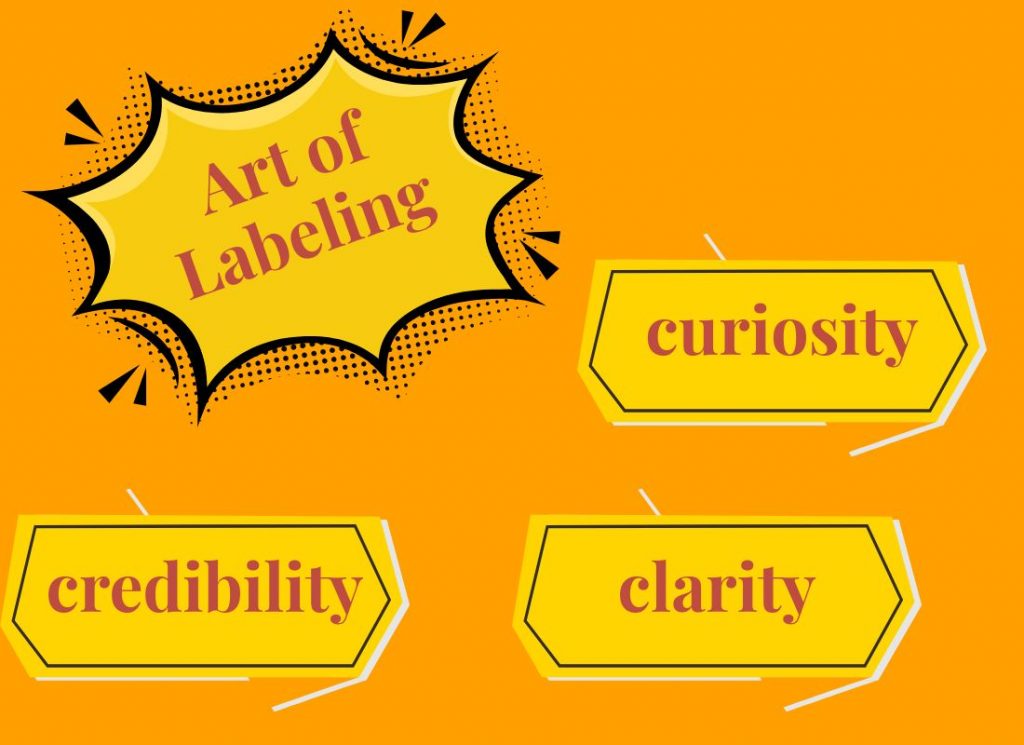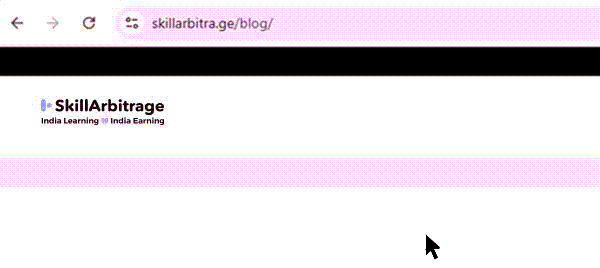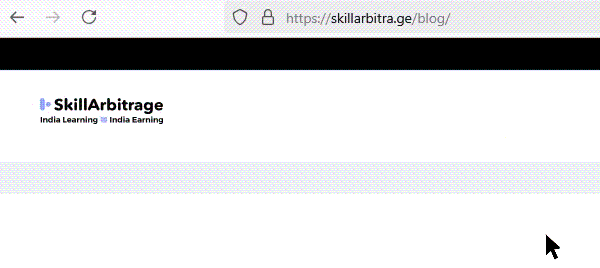This article teaches you how to use the power of labeling to turn your pitches into stable, long-term business relationships. Most Indian freelancers struggle to explain their most innovative ideas in a way that decision-makers understand, and this article explores how you can label your ideas for maximum comprehension, memory, and persuasion.
Table of Contents
Previously on The Dream 100…
Raghunandan cracked the code to get in front of high-value clients without chasing or begging. No more cold emails into the void. Instead, by strategically positioning himself within his Dream 100’s world, he made it impossible to be ignored.
But getting the meeting is just the first battle.
When a decision-maker finally gives you five minutes, how do you make them care? How do you explain a complex, innovative idea without losing them in details?
Now, it’s time for Raghunandan to master the next skill – the ability to pitch complex ideas persuasively in minutes using the power of labeling.
(Continued…)
Raghunandan stormed into the living room like a man racing against time. His hair was messy, his shirt untucked, and his laptop clutched underarm like he was running from a terrorist attack.
The door flew open and the disheveled figure of Raghunandan was framed in the doorway. He was panting, sweating, and clutching his laptop under his arm for dear life. He was trying to catch his breath and speak at the same time.
“You won’t believe what just happened.”
Swathi rolled her eyes. “Let me guess. One of your cold emails got a reply.”
“No.” He hobbled in. “Bigger.”
Parvathishankar folded his newspaper, knowing that peace was not an option anymore. “Go on.”
“One of my Dream 100 prospects, Arjun Mehta, CEO of Urbane Luxe, is in Chennai for a conference.” He took a dramatic pause. “I’ve been emailing with him for months and he’s given me five minutes with him.”
Swathi’s head snapped up. “Wait. WHAT?”
Raghunandan nodded aggressively. “Yes. Five minutes. That’s all I have. I have to crush this pitch. If I land this client, it’s the client. Retainer. Stability. Proof that I know what I’m doing.”
“When is it?” Swathi was jumping with excitement now.
Urbane Luxe’s content is tanking. Their engagement is in the gutter. They’re throwing money at ads, but it’s not working. I have the strategy to turn it around.
“Yeah, but when is it?” Swathi waved her hand in front of Raghunandan’s face, who was busy imagining his rosy future with a thousand-yard stare.
Swathi had to snap her fingers to bring Raghunandan back to the present. “When is it? Oh, in two hours at the Leela Palace Hotel.”
“What? Just two hours? Do you have the pitch ready?”
“I mean, I know what I want to say,” Raghunandan replied doubtfully.
Swathi jumped up. “Okay, okay! We have to prepare. What’s the pitch?”
“Both of you listen to my pitch and tell me how I’m doing, ok?” Raghunandan was typing furiously into his laptop.
Swathi took a seat beside Parvathishankar, who was watching the proceedings with barely suppressed laughter.
Then Raghunandan took a deep breath and launched into his pitch.
“The modern consumer is immune to traditional advertising. They don’t trust brands. They trust narratives. That’s why my strategy integrates AI-driven content ecosystems, behavioral psychology, and Dream 100 targeting to create an omnichannel presence that…”
Swathi tilted her head. Her expression was bewildered. “Wait. What does that actually mean?”
Raghunandan was in a trance of nervousness. His eyes were pinpoints of black and his voice quivered. “It means we create content that doesn’t just sell but resonates deeply with the brand’s aspirational audience.”
Parvathishankar rubbed his chin. He knew his son was going to need his help. “Alright. And what does that look like, practically?”
Raghunandan was like a rabbit caught in the headlights of an oncoming truck. The first real question sent him into a tailspin. He hadn’t even explained the strategy in full. Now he had to shift gears into execution. “So first, we’ll use sentiment analysis to study the emotional triggers behind Urbane Luxe’s audience engagement.”
Swathi thought like a CEO. If Raghunandan was not special to her and just some marketing guy pitching all these buzzwords, she’d have kicked him out already. “And how does that help them?”
“Well, once we map out the sentiment landscape, we’ll integrate behavioral segmentation models to categorize different buyer personas based on emotional responses.”
Parvathishankar, ever the proponent of simplicity, raised a hand. “Okay, slow down. Let’s say I’m the CEO. I ask you, ‘What’s the first step?’ What will you say to that?”
Raghunandan nodded eagerly. He could see the process in his mind clearly but the first step? Was it research? Was it hook testing? Was it user interviews? Was it getting a download from Urban Luxe’s marketing team? He had to choose one thing quickly! “Oh! Step one is crafting content assets tailored for different funnel stages. Short-form reels for awareness, mid-length explainer videos for consideration, and long-form deep dives for conversion.”
Swathi leaned forward. She felt the beginning of a headache. “So you’re saying they need more videos?”
Raghunandan recoiled at this oversimplification of his complex multistage master plan. He had to maintain the impression that he wasn’t just some video vendor. He was a strategist. What do strategists do? They say big words. “Well, not just videos. We also need to structure an AI-optimized content distribution plan where blog posts are repurposed into LinkedIn carousels, social snippets, and email drip sequences….”
Parvathishankar’s eyes glinted with amusement as he saw this inevitable car crash about to happen in two hours. “And how do you present this in five minutes?”
Raghunandan hesitated. “I guess I’ll just talk super-fast,” he mumbled.
Swathi was used to getting pitches from freelancers and it was a chore for her to go through those uninspired pitches. “Yeah, how do you make this sound exciting? Because right now, it sounds like a research paper or something.”
Raghunandan frowned. He couldn’t believe his loved ones were crushing his dreams. He worried that his brilliant plan would be foiled because of a failure of…communication. “No, no. It’s exciting! I’ll explain how we’ll use automated video syndication to ensure platform-native formats. So, for instance, vertical reels for Instagram, 16:9 widescreen edits for YouTube, and…
Parvathishankar leaned back into his chair with a thud. “Raghunandan.”
Raghunandan stopped mid-sentence.
Parvathishankar was deadpan. “Did you just say video aspect ratios in a pitch?”
Raghunandan opened his mouth and closed it so many times that he looked like a drowning fish.
Swathi pinched the bridge of her nose in exasperation. “Bro. The CEO does not care about formats.”
Raghunandan rubbed his forehead. “But he needs to know we have a structured plan.”
Parvathishankar sighed, then turned to Swathi. He made a circling motion of his index finger near his temple, signifying that they had a crazy person in the room.
She got up laughing, walked into the kitchen, and came back with a glass of water.
She held it out to Raghunandan. “Drink.”
Raghunandan couldn’t see anything except his pitch. “What? Why?” He was confused.
Parvathishankar leaned in. “Because you’re about to go to the hospital instead of the conference room with Arjun Mehta.”
Raghunandan took a sip with shivering hands and spilled some on his shirt.
Parvathishankar put his hand on Raghunandan’s shoulder to stabilize him. “You don’t need to explain everything. You need to make him want to know more.”
Raghunandan set the glass down in defeat. “How?”
Parvathishankar smiled. “With a label.”
Art of the label
Parvathishankar tapped the table. “Right now, your strategy is a sprawling, 500-piece puzzle. No one has time to put it together.”
Raghunandan exhaled. “So what do I do? Without explaining the strategy, I’m not getting the job.”
“You give him the box cover first.”
Raghunnaan looked up with hope. “Box cover?”
Parvathishankar nodded. “When you buy a puzzle, you don’t start with the individual pieces. You start with the big picture on the box. That’s what a label does.”
Raghunandan sat up. “So… instead of dumping everything on him, I just give him the big picture? How do I do that? And how do I make it look and sound different from what all the other marketers must be pitching him all the time?”
“Give a man a fish, and you feed him for a day. Teach a man to fish, and you feed him for a lifetime.”
This proverb condenses a deep truth, the difference between short-term aid and long-term empowerment, into a single, memorable sentence. It takes a complex idea (self-sufficiency vs. dependence) and makes it instantly clear, visual, and universal.
This is exactly what a powerful label does in a pitch.”
Parvathishankar grabbed a pen. “Right now, you’re throwing content ecosystems, AI tools, and distribution hacks at him. It’s too much. But what if you gave him something so clear and powerful that he immediately wanted to hear more? Maybe a visual, a metaphor – a visual metaphor?”
He scribbled two words on his notebook and slid it across the table.
The Authority Net.
Raghunandan read it out loud. His eyes flicked up. “That sounds powerful. But how will it communicate my strategy?”
Swathi nodded. “It sounds like something a CEO needs. Not just ‘another strategy.’ But it better be good. This’ll hook him. But if the rest isn’t airtight, you’re dead.”
Parvathishankar smiled. “That won’t happen. Because we will label every part of the strategy. It’s labels all the way down.”
What does a powerful label do
Parvathishankar tapped the words The Authority Net with his pen. “A good label doesn’t just describe. It creates curiosity, credibility, and clarity – three things you desperately need when you only have five minutes.”
Swathi nodded. “Okay, but why does this work better than just saying ‘AI-powered content strategy’ or whatever?”
Parvathishankar leaned back. “Because labels do five things.”
Labels create instant clarity
“You said it yourself, Raghunandan. Your strategy is complex. If you explain every detail upfront, you drown your audience. But a label takes something abstract like an AI-driven omnichannel influence system and turns it into something people can picture.”
He gestured at the words on the paper. “The Authority Net. It’s not just some vague concept. It’s a structure. A system. Something a CEO can visualize instantly.”
Swathi raised an eyebrow. “So… it’s like giving the strategy a handle? Something he can grab onto?”
Parvathishankar nodded. “Exactly. Without a label, your idea is slippery. With a label, it sticks.”
Raghunandan ran a hand through his hair. “Alright, that makes sense. What else can it do?”
Each sub-label opens curiosity loops
Parvathishankar pulled out a fresh page and started sketching. “Now, the real magic is in the layers.”
He drew three sections within the net. “If you just say ‘The Authority Net’ and stop there, it’s interesting, but it’s not enough. But the moment you say The Casting System, The Lure System, and The Tightening System, what happens?”
Swathi’s lips parted slightly. “People want to know what they mean.”
“Exactly,” Parvathishankar said. “Each sub-label isn’t just a section. It’s an open loop. It promises deeper insight. Your CEO won’t tune out because his brain needs to close those loops.”
Raghunandan scribbled it down. “So instead of dumping all the details at once, I let the labels guide him into the details?”
Parvathishankar pointed at him. “That’s right. Also, notice that the sub-labels follow the same visual metaphor. We use the fishing net analogy for the whole strategy but also for parts of the strategy. If your client knows anything about fishing, the strategy goes down easily into his mind without you having to push it with complicated and messy explanations.”
Clients engage with a labeled framework better than with execution details
Parvathishankar folded his arms. “Tell me which sounds more valuable. ‘I help brands with content strategy’ or ‘I build Authority Nets for luxury lifestyle brands’?”
Swathi’s eyes lit up her CEO brain instantly connected the idea of labels with the idea of brands. After all, a brand is also just a label. “The second one sounds exclusive. Like it’s a proprietary system.”
“Bingo.” Parvathishankar pointed at Raghunandan. “Right now, you’re explaining what you do like every other freelancer. But the moment you use a label, you shift from being a service provider to being a specialist with a unique framework.”
Raghunandan sat up straighter. “So instead of selling execution, I’m selling a system?”
Parvathishankar smiled. “Exactly! You’re talking to a businessman like a businessman.”
Labeled systems make proof easier to demonstrate
Raghunandan frowned. “But what about proof? Arjun is going to ask me if this actually works.”
Parvathishankar picked up his pen again. “That’s the beauty of a labeled system. Proof is easier to structure when the concept is clear.”
He tapped the Tightening System section of the sketch. “For example, instead of saying, ‘We’ll retarget your audience with personalized content,’ you say, ‘The Tightening System ensures no opportunity is lost. Every engaged user sees the right message at the right time.’”
Swathi had gotten the gist of it. “And because the system sounds defined, it makes it easier to trust?”
“Exactly,” Parvathishankar said. “A well-labeled strategy sounds tested even if it’s new to the client. That’s why every great marketer has named frameworks.”
Raghunandan was beginning to be convinced. “So I tie my proof directly to the system, not just the tactics?”
Parvathishankar said expansively. “That’s how you build authority.”
Labeling turns a freelancer into an innovator
Swathi was determined to poke holes in the theory so Raghunandan could take something solid to Urbane Luxe. “Okay, but is this just packaging? Like… what if the CEO sees through it and asks what makes you different?”
Parvathishankar knew what she was doing and had an answer ready. “Marketing is packaging, Swathi. It’s a net and customers are fish. Any marketing system will essentially be doing just that anyway. You know it, and Arjun Mehta knows it too. He is selling clothes and perfumes just like many other brands. But it’s the brand label that creates the positioning that differentiates his business. Also, if you can’t market your solution, then why should he trust you to market his brand?”
He tapped the words Authority Net again.
Swathi nodded thoughtfully. “It implies innovation. Even if the core strategy isn’t new, the way it’s structured makes it feel unique.”
“And that,” Parvathishankar said, “is how you stop being just another freelancer and start being the person who invented the Authority Net.”
Raghunandan stared at the page for a long moment, then exhaled. “Okay. I get it. This changes everything.”
Swathi rubbed her palms together in excitement. “Then let’s rebuild your pitch.”
Parvathishankar picked up his pen with purpose. “Layer by layer. Label by sub-label. Let’s design it right.”
Raghunandan spent the next hour refining, stripping away fluff, and sharpening every word. Swathi poked holes in weak spots. Parvathishankar forced him to tighten his explanations.
By the end of it, the pitch wasn’t just a pitch. It was a story, a system, a living, breathing conversation that pulled the listener in instead of overwhelming them.
And now, standing in front of Arjun, notebook in hand, he took a slow breath.
Everything led to this moment. If the label worked, he was in. If not… well, five minutes wasn’t a lot of time to recover. _________________________________________________________________________
Arjun leaned back, arms crossed. “Alright, kid. You got five minutes.”
Raghunandan didn’t hesitate. “Arjun, Urbane Luxe isn’t struggling with awareness. It’s struggling with authority.”
Arjun sighed with relief. Thank God, not another time waster. He’s coming to the point straight away.
“You don’t need more reach. You need an Authority Net. A system that not only captures attention but also makes sure no potential customer slips away.”
Silence. Swathi watched closely from the food table. The action between Raghunandan and Arjun was distracting her from her butter chicken. This was different. Before, Raghunandan would have started listing execution details. Now he was painting a picture.
Arjun said deliberately, “Go on.”
Raghunandan flipped open his notebook, sketching a wide fishing net.
“Most brands think marketing is about throwing out more content. But a real net isn’t just about size. It’s about structure.” He tapped the net.
“This isn’t content marketing. This is demand capture.”
Parvathishankar took a slow sip of his tea. “A label and a contrast. Now he has Arjun’s attention. Differentiation is happening right now.”
Raghunandan pointed at the net sketch.
“The Authority Net has three key systems. If even one of them is weak, leads slip through before they become customers.”
Arjun frowned, intrigued but skeptical. “And those are?”
Swathi raised an eyebrow. “See what he did there?”
Parvathishankar nodded. “He didn’t explain everything at once. He gave just enough to make Arjun ask the next question. A label without an open loop is just a name.”
Raghunandan divided the net into three sections.
“First, you have The Casting System – how you attract the right audience. Second, The Lure System – how you make sure the right audience actually cares. And third, The Tightening System – how you pull them into the boat and convert them.”
Swathi folded her arms. “So… just TOFU, MOFU, BOFU?”
Parvathishankar grinned. “Sure, but do you think Arjun cares about marketing jargon?”
Swathi paused. Point taken.
Parvathishankar nodded. “Labeling reframes the familiar. Now it’s something he can visualize. Also, he must be bored with the funnel analogy after this long in the business.”
Arjun leaned forward slightly. “Alright. Show me how I’m failing.”
Raghunandan pulled up Urbane Luxe’s Instagram.
“You have stunning influencer content. Beautiful campaigns. But look at the comment section.”
He zoomed in.
“Omg, love your skin!”
“What foundation do you use?”
“Where’s your dress from?”
“They’re responding to the person, not the product. That means your Casting System is catching the wrong fish.”
Swathi whistled. A clear, labeled problem. Now, Arjun could see the gap.
Arjun’s jaw tightened. “So what do we do?”
“Instead of flexing influencers, we use Embedded Aspirational Storytelling.”
Arjun frowned. “Meaning?”
Raghunandan pulled up a different brand’s campaign.
“This worked because the hook wasn’t ‘Look at me.’ It was, ‘I was struggling with acne. Here’s what changed everything for me.’”
He let the silence land. Arjun nodded slowly.
Swathi leaned in. “Okay, that was smooth.”
Parvathishankar whispered. “Notice what he’s doing? He’s not just explaining the concept. He’s giving a labeled solution and immediately proving it works with an example.”
Arjun leaned back. “Alright. I get the theory. But every marketer pitches a ‘game-changing system.’ How do I know this actually works?”
Swathi inhaled sharply. Here it was. The moment most freelancers choked.
Parvathishankar refilled his coffee from the coffee machine as he described the pivotal moment that had just happened. Arjun had just accepted Raghunandan’s authority. Arjun believed that Raghunandan knew what he was talking about. That’s why he asked him to show where Urbane Luxe is lacking. You have to be ready with your answer at this point. If you screw up here, all the trust is broken.
But Raghunandan didn’t flinch.
“Let’s apply The Authority Net to Urbane Luxe right now.”
Arjun silently appreciated this upstart’s resourcefulness. A live breakdown? Bold move.
Raghunandan flipped the page.
“You’re placing content where fish already swim, but you’re using the wrong bait. We swap influencer flexing for AI-driven aspirational storytelling.”
“You’re getting press in Vogue, Allure, and major skincare podcasts, but you’re not retargeting those audiences. No nurture. No second chance at conversion.”
Arjun’s eyes widened. “Wait… millions of views, and we’re not even following up?”
Raghunandan nodded. “Exactly.”
“Your retargeting ads treat first-time visitors and loyal buyers the same. No segmentation. No AI-driven optimization. So you’re burning money on generic ads.”
Silence.
Then Arjun exhaled. “Alright. What’s the fix?”
Raghunandan turned to a fresh page.
“Here’s how we tighten your Authority Net in 30 days.”
Aspirational Story-Driven Hooks – Shift from influencer-led to customer-experience-led content.
Full Dream 100 Optimization – Every PR mention fuels an owned audience.
AI-Powered Ad Sequences – Retargeting is based on behavior signals, not guesswork.
Swathi whispered, “Damn. That actually sounds… simple.”
Parvathishankar smiled. “That’s the power of labeling.”
Arjun leaned back, tapping the table. Then, finally, he grinned.
“Alright, kid. I gave you five minutes. You just earned ten more.”
Raghunandan smiled. “I got as long as you need.”
(To be continued…)







 Allow notifications
Allow notifications
